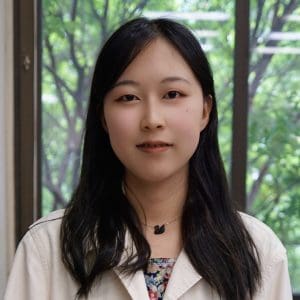My project and lab
I investigated how light affects glucose homeostasis through the sympathetic nervous system, using mouse models in Rejji Kuruvilla and Haiqing Zhao’s lab. This interdisciplinary project combines skills of both metabolism and neuroscience. I raised the mice under constant dark conditions and conducted various metabolic tests. I discovered that a lack of light can weaken the sympathetic nervous system’s response, leading to metabolic issues that worsen with age but can be corrected by regular light exposure. Throughout my project, I learned techniques from previous lab members, online resources, and other labs, which helped me become independent in project investigation and troubleshooting. I am grateful for the guidance from my PIs and lab. I meet with my PIs every one to two weeks for updates and discussions, and this regular feedback allows me to continuously improve my research. Their support is a great encouragement. Additionally, we have joint lab meetings with Samer Hattar’s lab at NIH, as well as annual committee meetings, where I receive valuable input from professors in related fields. This open and cooperative scientific research approach has greatly helped me. Working in a diverse lab environment with international members has been an exciting experience. Everyone is eager to share their suggestions and insights on each other’s projects. The multicultural setting has also boosted my confidence to share my ideas and enjoy engaging conversations with lab members.
CMDB program
I began my PhD journey during the COVID-19 lockdown. As an international student, I faced challenges related to visas and other policies. However, the program directors and staff within the CMDB program provided their support without hesitation, enabling me to embark on my PhD journey smoothly. The first-year CMDB courses include cell biology, molecular biology, developmental biology, genetics, biophysics, and bioinformatics. These courses not only emphasize foundational knowledge but also explore contemporary cutting-edge scientific research and methodologies. This coursework equipped me with a strong knowledge base and fosters interdisciplinary thinking for my upcoming research in the group. Additionally, we engage in reading, summarizing, and discussing papers each week, greatly enhancing my ability to read literature effectively. The department hosts weekly project progress reports and seminars by professors from various institutions, which broaden my perspective and aid my scientific research. The program also offers opportunities to navigate our career paths. In academia, we can interact with seminar speakers to learn about their academic journeys and receive insights for early career development. For careers beyond academia, we can attend Career Fridays, which are excellent for discovering potential career paths. I was fortunate to help organize these Career Fridays, which allowed me to learn many career stories from CMDB alumni.
Hopkins and Baltimore
Beyond the laboratory, the university and city offer plenty of enjoyment. Encountering failures, stress, and setbacks during the project can be challenging, but the various activities, sports, and views on campus provide great relief. I particularly enjoy the Inner Harbor. Walking alongside the water, watching the reflections of the sky and boats brings me calm. Pursuing science while overcoming challenges and enjoying life at Hopkins and in Baltimore has been a wonderful experience.
